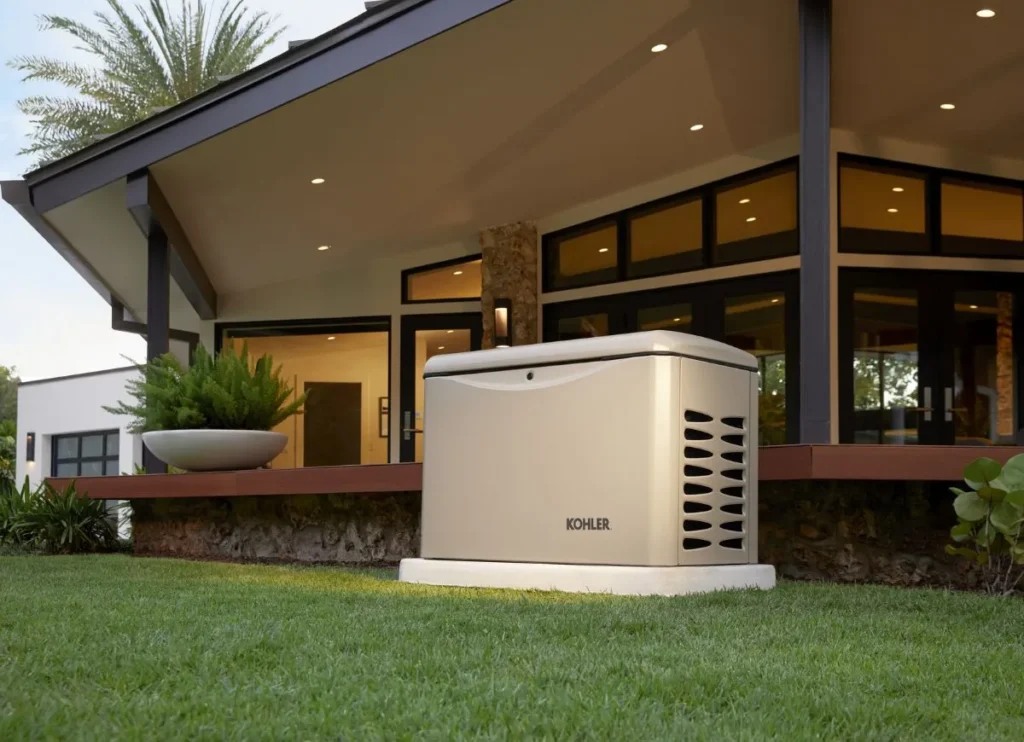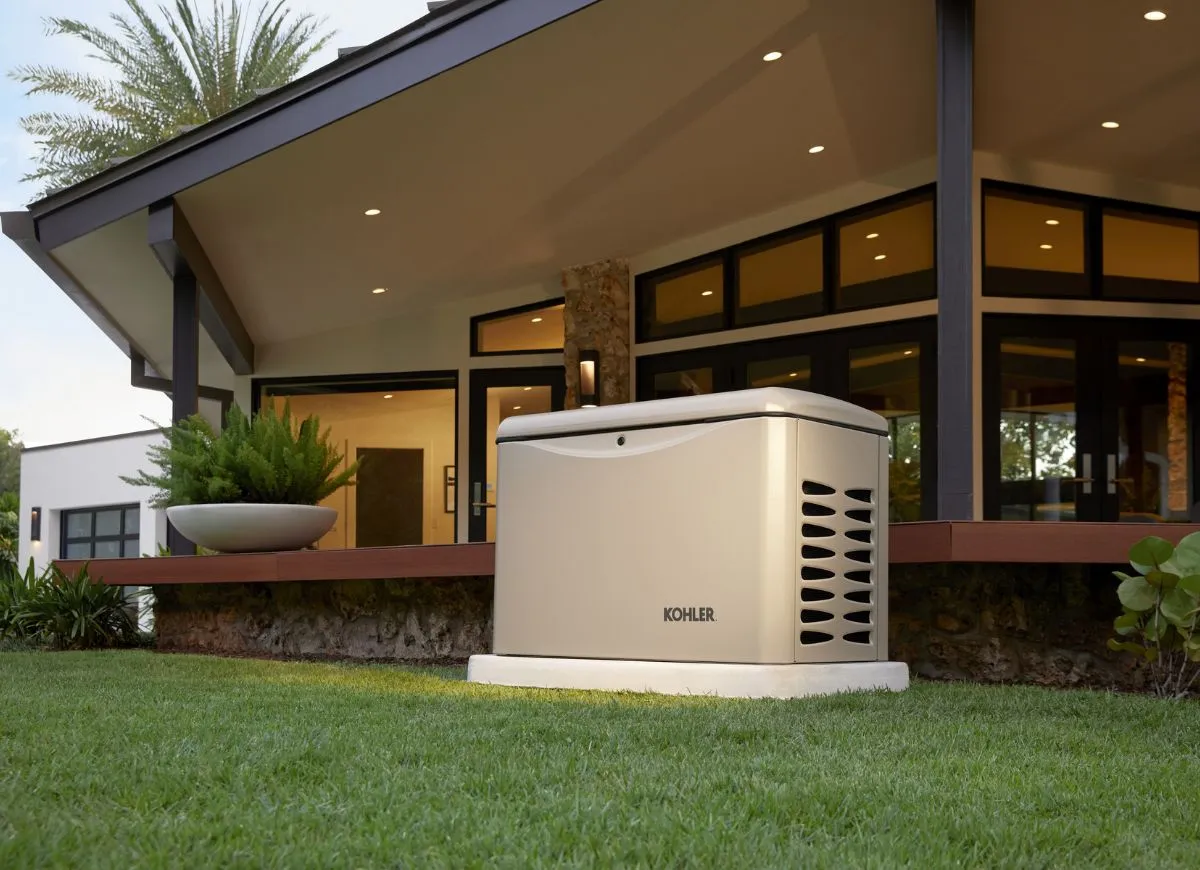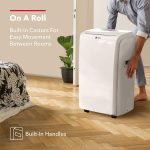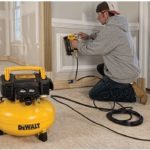Understanding the power requirements of a household is essential when considering whether a 6000 watt generator can suffice for your needs. Household power consumption varies significantly depending on the number and types of appliances used.
For instance, refrigerators typically require around 600 to 800 watts, while larger models may consume up to 1200 watts. Air conditioners, especially central units, are among the heaviest consumers, often needing between 2000 to 5000 watts depending on their size and efficiency.
Heaters are another major power consumer, with electric space heaters drawing approximately 1500 watts each. In colder climates, the cumulative power usage from multiple heaters can be substantial. Lighting, although generally less demanding, can add up. A standard LED bulb uses about 10 watts, while older incandescent bulbs may consume 60 watts each. With multiple lights in a household, the total wattage can quickly escalate.
Electronic devices also contribute to the overall power usage. A typical desktop computer requires around 300 to 500 watts, and a television might consume between 100 to 400 watts depending on its size and technology. Additional devices such as microwave ovens (approximately 1000 watts), washing machines (around 500 watts), and dishwashers (about 1200 watts) further compound the total power requirements.
It is crucial to distinguish between peak and continuous power needs. Peak power refers to the maximum wattage required when appliances start up, which is often higher than their running wattage. Continuous power represents the steady, ongoing wattage needed to keep appliances operating. Calculating the total wattage requirement involves summing the continuous power needs while also considering the peak demands to ensure the generator can handle these surges without overloading.
By understanding these aspects, homeowners can better assess whether a 6000 watt generator is sufficient to power their household effectively, ensuring both safety and functionality during power outages or off-grid scenarios.
Capabilities and Limitations of a 6000 Watt Generator
A 6000 watt generator offers a versatile solution for providing backup power to a household, but it is crucial to understand its capabilities and limitations. This type of generator typically delivers two distinct power ratings: continuous wattage and surge wattage.
Continuous wattage refers to the steady power output the generator can provide over an extended period, usually around 5000-5500 watts. Surge wattage, on the other hand, is the short-term power boost the generator can supply when starting high-demand appliances, often reaching up to 6000 watts.
The fuel type commonly used for a 6000 watt generator is gasoline, although some models also support propane or dual-fuel options. The runtime of the generator largely depends on the fuel tank capacity and load demand. On average, a 6000 watt generator with a full tank of gasoline can run for approximately 8-10 hours at 50% load. This makes it suitable for short-term power outages or intermittent use during extended outages.
When considering what a 6000 watt generator can power simultaneously, it is essential to prioritize essential appliances. Typically, such a generator can handle a refrigerator (600-800 watts), a few lights (60-300 watts), a television (100-400 watts), and a sump pump (800-1200 watts) all at once.
Additionally, it can support small kitchen appliances like a microwave (800-1200 watts) or a toaster (800-1500 watts). However, the combined wattage of all running appliances must not exceed the generator’s continuous wattage rating to avoid overloading.
There are inherent limitations and challenges when using a 6000 watt generator to power an entire house. High-wattage devices such as central air conditioning systems, electric water heaters, and electric stoves may be beyond the generator’s capacity.
Therefore, it is advisable to selectively power only the most critical appliances and devices. Additionally, managing fuel supply and ensuring the generator is operated in a well-ventilated area to prevent carbon monoxide buildup are crucial safety considerations.
In summary, while a 6000 watt generator can effectively support essential household functions during power outages, understanding its specifications and limitations is key to maximizing its utility and ensuring safe operation.
Tips for Efficiently Using a 6000 Watt Generator
When utilizing a 6000 watt generator to power a house, it is crucial to adopt strategies that maximize its efficiency. One of the first steps is to prioritize critical appliances. Essential items such as refrigerators, freezers, sump pumps, and medical equipment should be at the top of your list. By focusing on these necessities, you can ensure that the most important devices remain operational during a power outage.
Another vital approach is to use energy-efficient devices. Appliances and gadgets designed to consume less power can significantly extend the usability of a 6000 watt generator. For example, swapping incandescent light bulbs with LED bulbs or using energy-efficient refrigerators can reduce the overall load on the generator, allowing it to power more devices simultaneously.
Implementing load management strategies is also essential. This involves staggering the use of high-wattage appliances to avoid overloading the generator. For instance, instead of running the washing machine and microwave at the same time, you can alternate their use. This practice not only prevents overloading but also helps in maintaining a steady and manageable power draw.
Regular maintenance of the generator is another key factor in ensuring its efficient operation. Routine checks and servicing can prevent unexpected breakdowns and prolong the generator’s lifespan. Basic maintenance tasks include checking the oil level, inspecting the air filter, and ensuring that the fuel supply is clean and adequate.
Additionally, safely connecting the generator to the house’s electrical system is paramount. Using a transfer switch can facilitate this process. A transfer switch allows you to connect the generator directly to your home’s electrical panel, ensuring a seamless and safe transition between the main power supply and the generator. This not only enhances safety but also improves the efficiency of power distribution throughout the house.
By prioritizing critical appliances, using energy-efficient devices, implementing load management strategies, performing regular maintenance, and safely connecting your generator, you can optimize the performance of a 6000 watt generator, ensuring it effectively powers your home during outages.
Alternative Solutions for Home Power Backup
While a 6000 watt generator can provide substantial power, it may not be sufficient for all households. Therefore, exploring alternative solutions for home power backup is crucial to ensure uninterrupted electricity. Several options are available, including higher wattage generators, solar power systems, battery storage solutions, and hybrid systems that combine multiple power sources.
Higher Wattage Generators: For homes requiring more power, higher wattage generators are an excellent option. These generators can range from 7000 watts to upwards of 20,000 watts, offering the capacity to power more appliances and systems simultaneously. The primary advantage is their ability to handle larger loads, but they come with higher fuel consumption and increased maintenance needs.
Solar Power Systems: Solar power systems harness energy from the sun through photovoltaic panels. They are an eco-friendly and sustainable alternative, reducing reliance on fossil fuels. The initial installation cost can be high, but long-term savings on electricity bills and potential tax incentives make them an attractive option. However, solar power’s effectiveness depends on geographic location and weather conditions.
Battery Storage Solutions: Battery storage systems store electricity from the grid or from renewable sources like solar panels, providing backup power during outages. These systems are becoming more advanced and efficient, with options like lithium-ion batteries offering high energy density and long lifespan. The main disadvantages are the initial cost and the need for periodic maintenance, but they provide a silent and clean energy backup.
Hybrid Systems: Combining multiple power sources, hybrid systems offer a versatile and reliable backup solution. For example, a hybrid system might integrate a generator with solar panels and battery storage, ensuring continuous power supply even if one source fails. The complexity and cost of installation can be higher, but the redundancy and flexibility they provide are significant benefits.
Each backup power solution has its pros and cons, and the best choice depends on individual household needs and circumstances. By considering factors such as power requirements, environmental impact, and budget, homeowners can select the most suitable alternative to ensure their home remains powered during outages.




